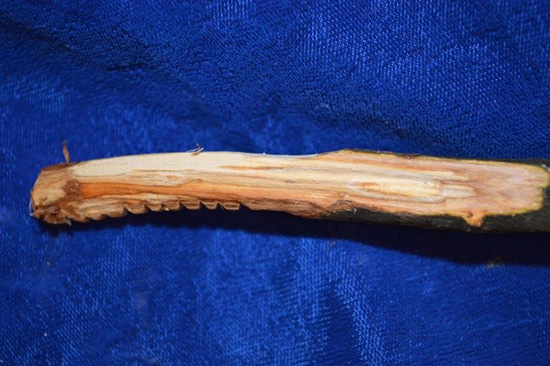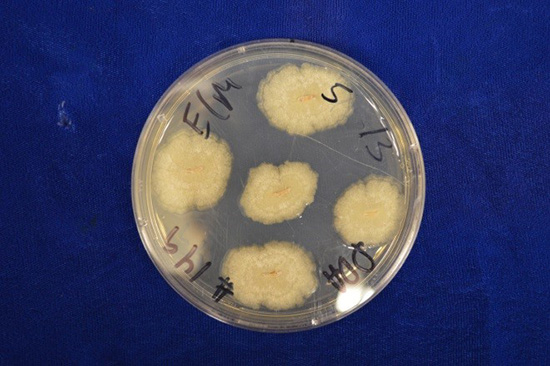Issue 12, July 26, 2013
Verticillium Wilt Strikes Again
Verticillium wilt on elm has recently been diagnosed at the U of I Plant Clinic. Verticillium wilt is caused by the fungal pathogens, V. albo-atrum or V. dahlia. These pathogens are found in the soil and can easily survive there for years because of its ability to produce resting structures that can directly infect the roots of susceptible plants. Hundreds of plant species, including trees, shrubs, groundcovers, vines, vegetables, fruits, herbaceous ornamentals, and flowers may become infected. There appears to be different strains of Verticillium sp., so plant susceptibility may vary. Some trees that are frequently infected by this disease are maple, ash, elm, and redbud. Luckily, some plants can be genetically resistant to this disease. For a list of trees and shrubs that are affected by Verticillium wilt, you can refer to the following link: http://urbanext.illinois.edu/hortanswers/detailproblem.cfm?PathogenID=26
Infectionof Verticillium sp. begins in the roots and then the fungus proceeds up the tree. The water conductive system becomes plugged with the fungus. The tree responds to the infection by further plugging of the water conducting vessels with tyloses and gum to try to block the fungus. This means that no water is able to get to the foliage and symptoms such as curl, wilt, yellowing, reddening, defoliation, and branch death can occur. During the onset of the disease, one side of the tree may exhibit symptoms or one or more individual branches may die. Peel off some of the bark on a symptomatic branch and look for staining of the wood in distinct streaks of brown, dark green, or yellow-green wood. Verticillium-infected ash trees do not always show staining.

In the picture above, there was streaking found in the wood of an elm after the bark was removed. Small wood chips were taken from this streaked area in order to isolate the fungus for diagnosis.

In the picture above, Verticillium sp. grew from all of the elm wood chips that were placed on potato dextrose agar.
Symptoms may be observed throughout the growing season and the severity of symptom development is dependent upon host susceptibility and environmental conditions. Some plants may die quickly, while others are slower to decline. Trees under stress (drought, nutrient, salt) are even more vulnerable to infection. Some plants may be able to recover, but may develop symptoms years later. Verticillium wilt symptoms can be confused with many other problems, so we suggest that you rule out this disease by submitting a sample to the U of I Plant Clinic. Samples should be alive, showing vascular streaking (excluding ash), thumb-thick (if possible), and 8 to 10 in. long. If you want to test ash for Verticillium wilt in ash, you will need to be sure to submit leaf petioles for testing. The cost for Verticillium testing is $15.
There is no cure for Verticillium wilt. Still, there are many cultural and preventive strategies to help manage the disease and help infected trees live with the fungus. Always start with healthy plants and maintain their vigor. Grow plants in the appropriate site conditions. If your tree dies due to Verticillium wilt, you should avoid growing susceptible species in that area. If only mild symptoms of this disease occur, you may want to try to delay the progression of this disease by pruning out affected limbs, supply balanced fertilization, and provide adequate irrigation.
Author:
Stephanie Porter